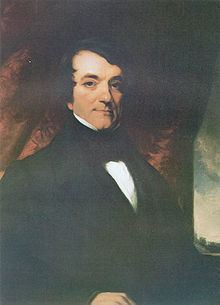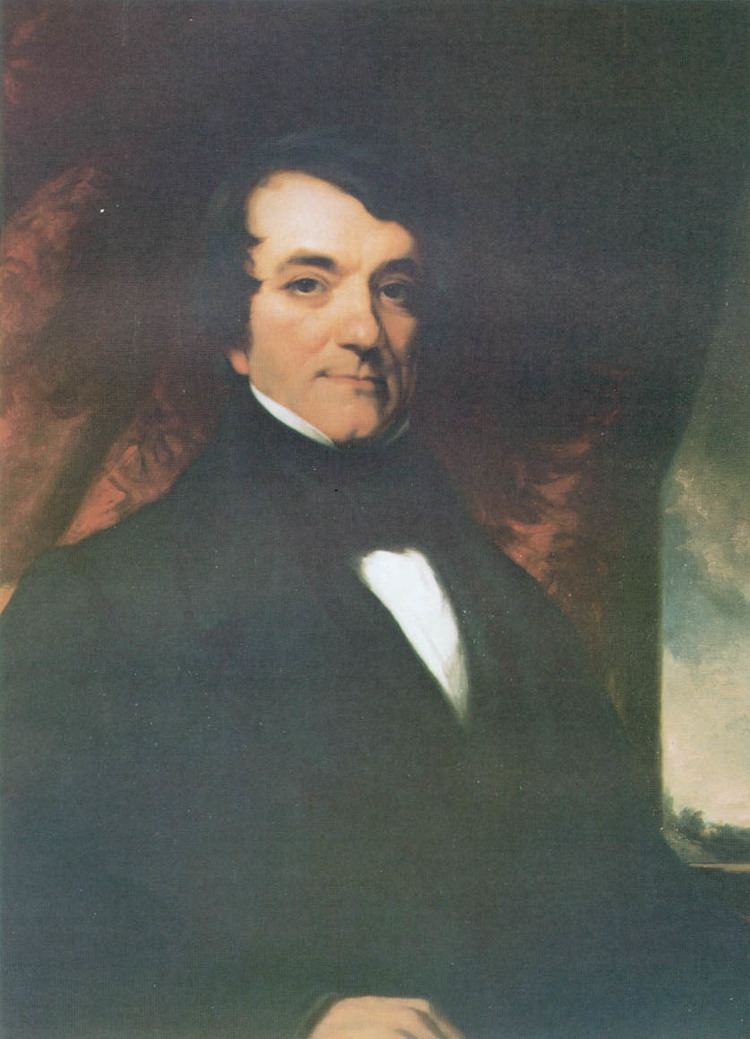Name John Spencer | Parents Ambrose Spencer Children Philip Spencer | |
 | ||
Books Review of the Testimony Given Before the General Court Martial, Upon the Trial of Brig. General George Talcott, in June and July, 1851; and of the Proceedings of the Court. by a Counsellor at Law. to which Is Appended a Copy of the Record of the Trial Similar People Philip Spencer, Ambrose Spencer, John Tyler, Robert Rubin, Timothy Geithner | ||
John Canfield Spencer (January 8, 1788 – May 17, 1855) was an American lawyer, politician, judge and United States Cabinet secretary in the administration of President John Tyler.
Contents
Early life

John Canfield Spencer was the son of Ambrose Spencer, Chief Justice of the New York Supreme Court. He graduated from Union College in 1806, became secretary to New York Governor Daniel D. Tompkins in 1807, studied law in Albany, New York, and was admitted to the bar in 1809, commencing practice in Canandaigua, New York. He married Elizabeth Scott Smith in 1809 and became a master of chancery in 1811.
State politics
During the War of 1812, Spencer served in the United States Army where he was appointed brigade judge advocate general for the northern frontier. He was postmaster of Canandaigua, New York in 1814, became assistant attorney general and district attorney for the five western counties of New York in 1815 and was elected a Democratic-Republican to the United States House of Representatives in 1816, serving from March 4, 1817, to March 3, 1819. He was a member of the committee that reported unfavorably on the affairs of the Second Bank of the United States.
In 1819, he was the Clintonian candidate for U.S. Senator from New York, but due to a three-cornered contest with Bucktail Samuel Young and Federalist Rufus King, no-one was elected. He was a member of the New York State Assembly from 1820 to 1822, and was Speaker in 1820. He was a member of the New York State Senate from 1825 to 1828.
In 1826, Spencer served as a special prosecutor to investigate the disappearance of William Morgan who was arrested, kidnapped and murdered for exposing secrets kept by Freemasons, thus sparking the Anti-Masonic movement. Spencer sided with the anti-Masons and was the author of a manuscript on Masonic rituals. He was again a member of the New York Assembly from 1831 to 1833 and moved to Albany, New York in 1837. He edited the English edition of Alexis de Tocqueville's Democracy in America and served as Secretary of State of New York from 1839 to 1841.
Federal government
In 1841, President John Tyler appointed Spencer to be Secretary of War in his administration. As War Secretary, he proposed a chain of posts extending from Council Bluffs, Iowa to the Columbia River. He also recommended that the government adhere to arrangements made by Army commanders in the field for compensation of the Creek Indians, who had been forced to move west of the Mississippi. In 1842, his nineteen-year-old son, Philip Spencer, a midshipman, was executed without court-martial along with two other sailors aboard the brig USS Somers for allegedly attempting mutiny.
In 1843, Spencer was appointed Secretary of the Treasury after the resignation of Walter Forward. As Treasury Secretary, he was preoccupied with the tariff and believed that the deficit and other federal expenditures should be funded by duties on imports rather than by internal taxation, something he was forced to announce for the fiscal year in 1843. The expenditures of the treasury had exceeded its receipts and he advocated additional import duties on articles such as coffee and tea. To help fund the federal deficit he engaged in controversial issues of Treasury Notes. He also continued to develop a plan, originally initiated by Forward, for a Board of Exchequer to keep and disburse public funds raised by duties. The Exchequer bill, which reflected continuing interest in some form of independent treasury system, failed due to a political conflict in the United States Congress.
President Tyler nominated Spencer to be an Associate Justice of the Supreme Court twice, first in January 1844 to fill Smith Thompson's seat and again in June of the same year to fill Henry Baldwin's seat, but the Senate failed to confirm him both times. As one of few northerners in an administration dominated by southern interests, Spencer found it increasingly difficult to serve in his cabinet post and resigned as Treasury Secretary in May 1844. He returned to Albany where he died on May 17, 1855. He was interred in Albany Rural Cemetery beside his wife, Elizabeth.
